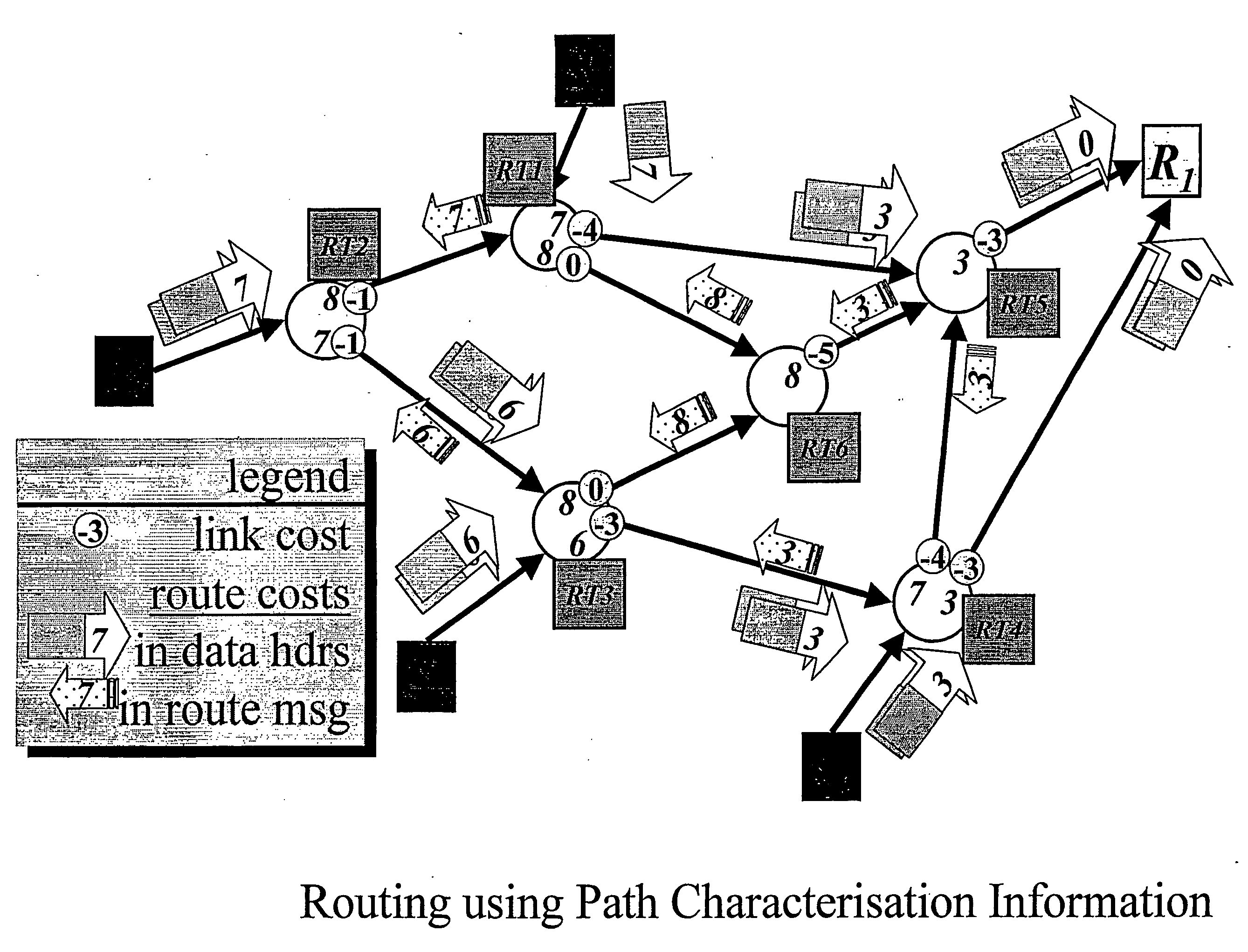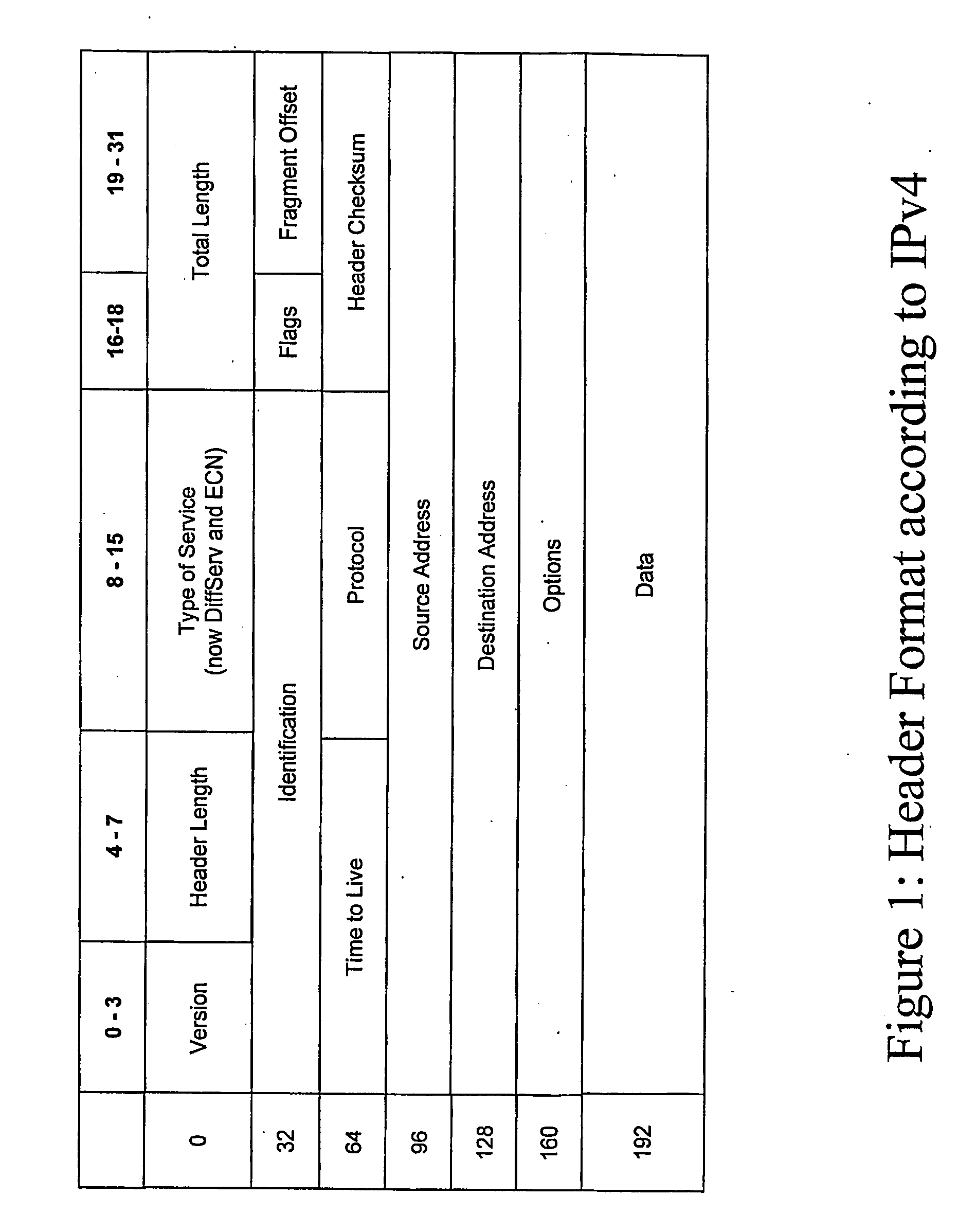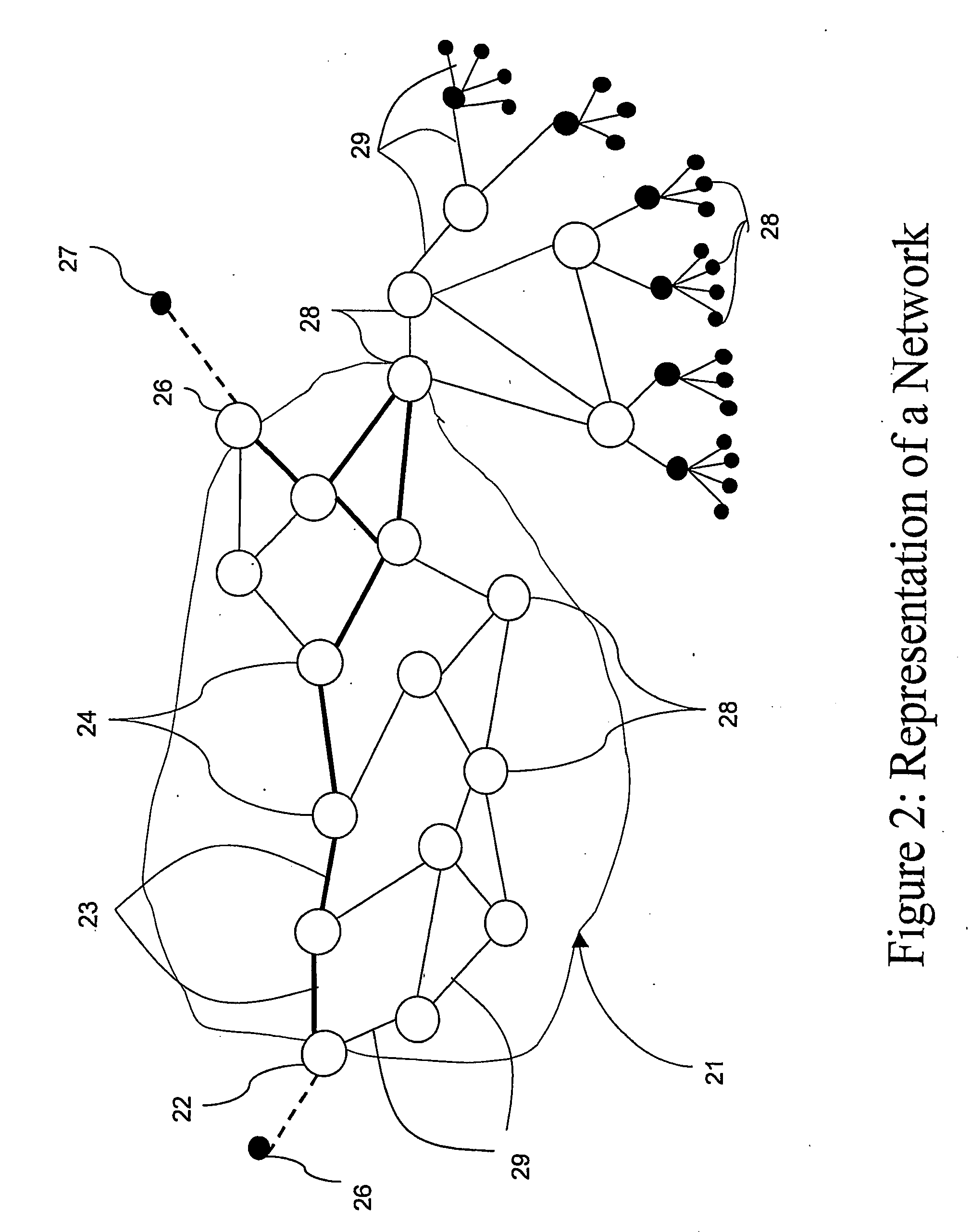Treatment of Data in Networks
a technology for data and networks, applied in the field of data processing in networks, can solve the problems of packet damage, packet duplicate, and packets arriving damaged, and achieve the effect of cost-effectiveness
- Summary
- Abstract
- Description
- Claims
- Application Information
AI Technical Summary
Benefits of technology
Problems solved by technology
Method used
Image
Examples
Embodiment Construction
[0068]With reference to FIG. 2, there is shown a topological representation of certain features of a network. This figure will be referred to in order to describe an exemplary network 21 according to an embodiment of the invention, but it should be noted that the invention is applicable to a variety of different categories of network, such as fixed, mobile, ad hoc, and other types, and to networks themselves containing a variety of different categories of communication channels. As shown in FIG. 2, the network 21 may in fact be a sub-part of a wider network such as the Internet itself. The network 21 comprises a plurality of nodes 22, 24, 26, 28 each of which may serve to fulfil one or more of the following roles in relation to a particular attempt to communicate data from one location to another: providing data, forwarding data, and receiving data; or they may not be involved. At different times, or concurrently but in relation to different attempts to communicate data, or in relat...
PUM
 Login to View More
Login to View More Abstract
Description
Claims
Application Information
 Login to View More
Login to View More - R&D
- Intellectual Property
- Life Sciences
- Materials
- Tech Scout
- Unparalleled Data Quality
- Higher Quality Content
- 60% Fewer Hallucinations
Browse by: Latest US Patents, China's latest patents, Technical Efficacy Thesaurus, Application Domain, Technology Topic, Popular Technical Reports.
© 2025 PatSnap. All rights reserved.Legal|Privacy policy|Modern Slavery Act Transparency Statement|Sitemap|About US| Contact US: help@patsnap.com



